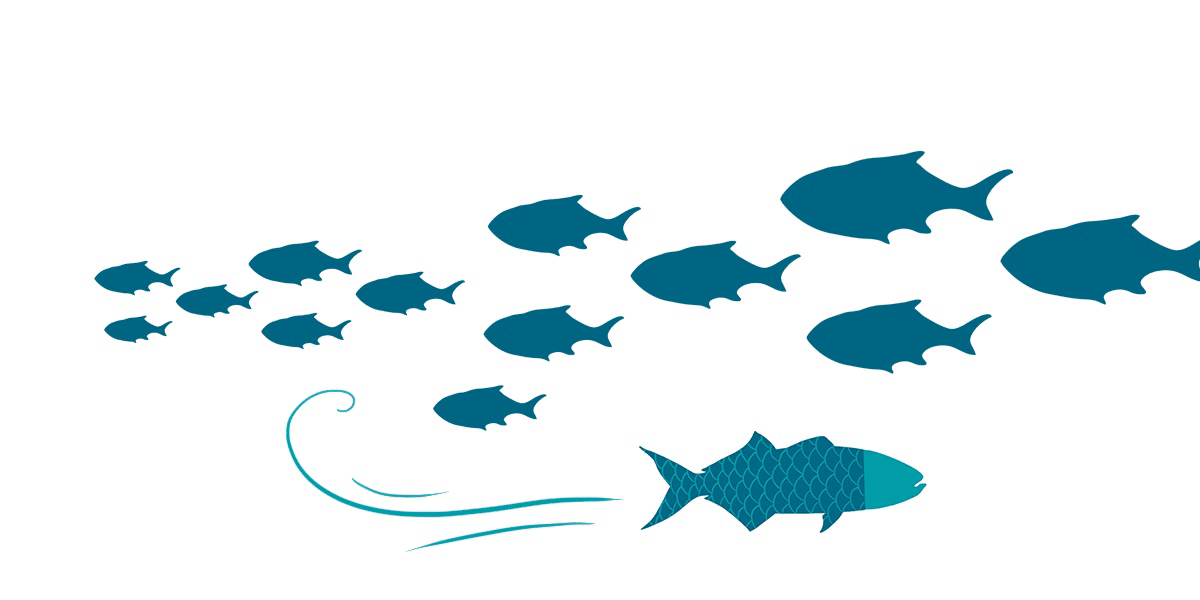The 7 Steps I Followed When Changing Careers

When you think of Rosh Review, what do you imagine?
Emergency Medicine…
Physician Assistant…
OB/GYN…
Family Medicine…
Internal Medicine…
Marine Biology…
Wait, what? Marine biology?
When you look through the qualifications of the Rosh Review team, you may be surprised to find a marine biologist here. We even have an ornithologist and a botanist, too!
So what are these ecologists doing at a medical company? Turns out we are all on the copy editing team.
Everyone has their own path. Some are longer than others. For those of you who have always known what you want to do with your life, I’m a little jealous. When I was in high school I really had no idea, so I have some experience at switching jobs and even careers.
Are you ready to move to a new job, a new field, or a new career entirely? Even if you are just toying with the idea, it can seem daunting. So let an expert at career transitions help you out! (Side note: I think that will be what I print on my business cards: Melinda Campbell, Expert at Career Transitions.)
I’ll walk you through the steps I’ve taken in the past when looking for a new career:
1. Think about the things you love and…don’t love… about your current and past jobs
For some of you, this may end up in printed columns. Others may just contemplate it while walking their dog. I chose to do both. Getting that list out of your head and onto paper (or a screen) can turn your contemplation into action.
Once you’re done thinking about your job(s), you’re ready for step 2.
2. List your strengths and weaknesses
This one can be difficult, so if you have loved ones who you trust, ask them for some input here. You might be totally missing your biggest strength! (Mine is the flexibility to take what is at hand and turn it into a winning experience.)
Then use those lists to think about the following:
3. Identify what, specifically, you love about your current or past positions
Part of what I loved about being a marine biologist was being in nature. That path led me to outdoor education, which today is my side passion. I put on a number of other hats (zookeeper and fish technician the coolest ones) before becoming a high school science teacher. After many years of teaching is when I honed this procedure for switching careers.
There were a lot of walks with my dog where I thought about how much I loved being a teacher. That look in a student’s eye when they suddenly figured out a concept that had been stumping them. Helping others find their voice so they could communicate their passion to the world. I knew I wanted to keep some facets of teaching in my next venture.
4. Brainstorm what careers use the things you love about your current job
A good ol’ Google search can help here.
Don’t forget about soft skills. For instance, I have a skill for interpretation. I’ve worked with scientists who are trained to use big words to communicate their findings. I have also worked with students who have learning disabilities that make words like “bouquet” difficult to understand. Those experiences have given me a gift for breaking down complex concepts into terms that anyone can understand.
Once you find something you’re interested in, you’re ready for the next step:
5. Note if you need any specific training to qualify
When I started feeling like teaching might not be my last career, I looked for jobs that sounded interesting to see what skills I lacked. At the time, I was looking at educational nonprofits and many of them wanted experience with grant writing. So I signed up for some online classes while looking for opportunities to apply for grants for my school. I also kept looking for other jobs that sounded interesting. And who knows, maybe you’ll stumble across your dream job, like I did.
Another of the ecologist-turned-copy-editors at Rosh Review enrolled in the UC Berkeley Copyediting Certification courses when she realized she wanted to get into editing.
And if you want to work in medicine or change your medical specialty, you know Rosh Review is here for you if you need a Qbank for studying.
6. Make sure to identify the things you don’t like about your current job
Avoid jobs that will require you to do the things you hate!
As much as I love teaching, I have never been and will never be a morning person. So freelancing, which allows me to work during my body’s preferred schedule, has been great for my mental and physical health.
I also am not a fan of grading papers. My side passion of outdoor education is nice for this. I get the joy of interacting with students and seeing that spark of knowledge light in their eyes. But there are no assignments for me to haul home and grade!
7. Research where you want to work or who you want to work for
This could be as broad as a country or region or as specific as a person you want as a coworker to inspire you daily. Nowadays, the world is available to us, so the choices can seem endless. Do yourself a favor and narrow it down a bit. (But don’t forget to keep yourself open to that random opportunity that comes knocking…)
Whether this is all written out in front of you or locked in your mind, be sure to take some time and sit with all of this information. Figure out if the answers seem true to you or if they are coming from other people.
A lot of this procedure was honed when I left the public schools, which is why you heard so much from then. But when I left my curriculum writing job after that, I recycled all of the information. Plus, I had new data to add to it. Most importantly, I learned that I loved working from home (step 3!) But I also realized I wanted to be my own boss.
Completing steps 4 and 7, above, I decided freelancing might be a perfect fit. I can avoid attempting to be productive during mornings, too. The extra bonus: freelancing allows me to travel and work at the same time. The last two summers, I have packed up my dog and my laptop (maybe a few more essentials) and hit the road, exploring North America for weeks on end.
Plus, freelancing allows me to do outdoor education, which is a very seasonal job. Today I helped a class of high schoolers determine the health of their watershed at one of the D.C. area’s national parks. I came home, snuggled with my dog, then did some editing before working on writing this article.
No papers to grade, witnessing that slow smile when an ecology term clicked, time in nature, working from home with my dog at my side… What a great day. I think this career change might be the one to stick!
I hope my career transitions inspire you. At the end of the day, if your dream job doesn’t end up being what you thought, there is another journey just waiting to happen!
We would love to hear about your path. Share in the comments below.
Thinking about a career change? Here are some other blogs you should read:
How to Write the Perfect Personal Statement
10 Ways to Prevent or Reduce the Effects of Physician Burnout
How to Work from Home While Keeping a Career in Medicine
Get Free Access and Join Thousands of Happy Learners





Comments (0)